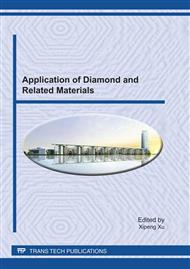p.97
p.102
p.107
p.112
p.116
p.121
p.126
p.131
p.136
A Research on the SiCp Reinforcing Cu-Base Composite Material's Cutting Performance
Abstract:
The relationships among the n, ap , and f of the SiCp /Cu composite material produced by powder metallurgy and extrusion have been investigated. The cutting force F of this material is also discussed in this paper by the measuring of the three cutting factors of n, ap, and f, applying the dislocation theory and the electron microscope analysis of the cutting surface and sub-surface. The differences are analyzed between the SiCp/Cu composite materials, QSn6-6-3. H59-1and the copper cutting surface and the sub-surface. The forming of mechanism, the function of SiCp in the cutting process and the influence on the cutting surface quality are also analyzed. This research has shown: because the SiCp particles prevent the dislocation moving, the dislocation groups are formed on the SiC/Cu interface, and the stress concentration is produced, the typical brittle separation appears in the SiC/Cu composite material cutting process. In addition, the cutting force increases with the depth of cut and feed increasing and decreases while the cutting speed increases.
Info:
Periodical:
Pages:
116-120
Citation:
Online since:
June 2011
Authors:
Keywords:
Price:
Сopyright:
© 2011 Trans Tech Publications Ltd. All Rights Reserved
Share:
Citation:


